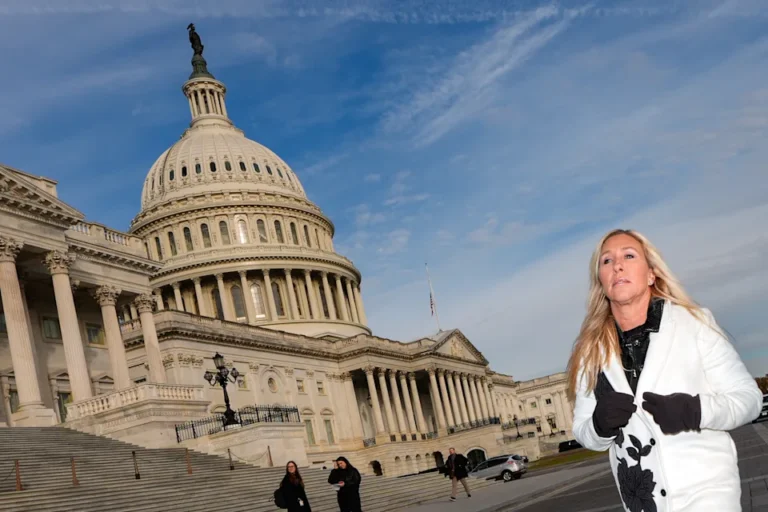President Donald Trump’s political world runs by one unchanging rule: no permanent friends, no permanent enemies. Rep. Marjorie Taylor Greene, who plans to leave Congress in January, is the latest test of this pattern.
On Saturday, Trump called Greene “a nice person” just hours after labeling her a “traitor.” Greene, a central figure in the “Make America Great Again” movement, backed Trump’s false 2020 election claims and mirrored his combative style. Her departure is unusual compared with other Republicans who left, criticized, or returned to Trump’s orbit.
Unlike other GOP figures who fell out with Trump over ideology or character, Greene’s disagreements centered on the Jeffrey Epstein files and health care. She now becomes the most prominent MAGA figure to part ways with him, raising questions about what this means for both of them.
“I have fought harder than almost any other elected Republican to elect Donald Trump and Republicans to power,” Greene said in a video announcing her plans to leave Congress.
Kevin Bishop, former aide to Sen. Lindsey Graham, described the split as unexpected. He said Trump’s influence remains strong over the Republican base despite lower overall approval ratings.
Trump was not always the central figure in the GOP. During his 2016 presidential run, rivals harshly criticized him. Sen. Lindsey Graham once called Trump a “race-baiting, xenophobic, religious bigot” but later became a strong ally. Marco Rubio, previously a vocal critic, also reconciled with Trump and now holds a senior administration role.
JD Vance, who once compared Trump to Adolf Hitler in a 2016 op-ed, later ran for Senate in Ohio praising Trump’s policies on immigration and trade. Those who refused to realign with Trump often faced political dead ends. Even Sen. Bill Cassidy, who voted to convict Trump after his presidency, later offered key votes supporting Trump-backed appointments.
Greene herself acknowledged this trend, noting that many establishment Republicans who opposed Trump were welcomed back after elections.
Bishop explained that Trump treats politics like business. “He views the presidency as slightly more transactional,” he said. “You fight over a deal, then work together later on another deal.” Trump’s approach blends strategy with personal connection, often reinforced by time spent on activities like golf, which helps him gauge loyalty and build alliances.
Some of Greene’s fights have already gone her way. The release of the Epstein files aligned with her position, and health care negotiations allowed her to claim partial success. Greene also has financial stability, a strong social media presence with 1.6 million followers, and experience on the conservative media circuit.
She could still pursue statewide office, including the Georgia governor’s seat or a Senate run, though she acknowledged Trump’s continued influence in her House district as a key factor in avoiding a contentious primary.
Trump, reflecting on Greene’s departure, said she would not have survived the primary without stepping aside. Yet he signaled that reconciliation remains possible. “I can patch up differences with anyone,” he told NBC, showing his usual openness to political maneuvering despite public disagreements.
The Trump-Greene split underscores the fluidity of GOP alliances under Trump’s leadership. Even fierce disagreements may eventually be resolved if political calculation and shared interests align, keeping the door open for second chances.







